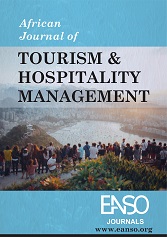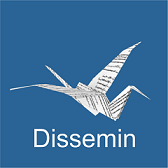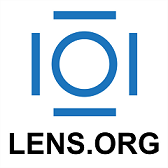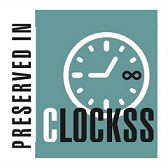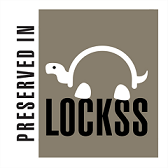Optimising Social Media Identity Functionality for Enhanced Performance of Licensed Accommodation Facilities in Uganda
الملخص
The hospitality sector contributes to the Ugandan economy, with 667,000 people (6.7% of total employment) reported to be employed in the sector. Despite this, several licensed accommodation facilities are underperforming, with occupancy rates below the benchmark of 30%. Previous studies have increasingly examined social media in the hospitality sector, focusing mostly on its general usage while overlooking the effects of specific social media functionalities on firm performance. This study addresses the identified gap by analysing how social media identity functionalities affect the performance of licensed accommodation firms in Uganda. The study was grounded in the resource-based view theory and the social media functionality framework. It employed a quantitative research approach with a correlational research design. From 185 licensed accommodation facilities, a sample of 180 managers was surveyed, whereas 19 assistant managers participated in the pretesting of the questionnaire. Validity was established using the content validity index, and reliability was established through Cronbach's alpha (>0.7). Descriptive statistics (frequencies and means) and inferential statistics, primarily linear regression analysis, were used in data analysis to test the research hypotheses. The study findings revealed that social media identity functionality had a statistically significant effect on the performance of licensed accommodation facilities in Uganda (F [5, 174] = 62.498, p < .001). Together, the variables accounted for 50.6% of the variance in performance (R2 = .506). The evidence suggests that social media does not only serve communication purposes; rather, it becomes a strategic resource if select functionalities are harnessed. The study therefore recommends that accommodation establishments in Uganda can enhance their performance by adopting certain social media functionalities in their marketing and customer engagement strategies. These findings contribute to the literature by broadening the understanding of social media's role in firm performance, particularly in the context of licensed accommodation establishments in developing economies where empirical evidence is limited.
التنزيلات
المراجع
Adjei, J.K., Adams, S., Mensah, I.K., Tobbin, P.E., & Odei-Appiah, S. (2020). Digital identity management on social media: Exploring the factors that influence personal information disclosure on social media, Sustainability, 12, 9994; Doi:10.3390/su12239994
Ajzen, I. (1991). The Theory of Planned Behavior. Organizational Behavior and Human Decision Processes,50, pp. 179–211.
Arika, M. A., & Moronge, M. (2017). Influence of social media marketing on performance in the hospitality industry in Kenya: A case of Kenyatta International Convention Centre. The Strategic Journal of Business & Change Management, 4(2), 958 – 976. doi:10.61426/sjbcm.v4i2.476
Armutcu, B., Tan, A., Amponsah, M., Parida, S., & Ramkissoon, H. (2023). Tourist behaviour: The role of digital marketing and social media, Acta Psychologica. 240 (2023) 104025. https://doi.org/10.1016/j.actpsy.2023.104025
Badran, A., Tanner, S., & Alton, D. (2023). Organisational identity development by entrepreneurial firms using social media: a process-based model. Journal of Business & Industrial Marketing, 38 (8), 1689–1709. https://doi.org/10.1108/JBIM-03-2022-0137
Barney J.B. (2020). Measuring firm performance in a way that is consistent with strategic management theory. Academy of Management Discoveries, 6, pp. 5-7
Barney, J.B. (1991). Firm resources and sustained competitive advantage. Journal of Management, 17, pp. 99 - 120.
Czakon, W., Mania, K., Jedynak, M., Ku´zniarska, A., Choi´nski, M., & Dabi´c, M. (2024). Who are we? Analysing the digital identities of organizations through the lens of micro-interactions on social media, Technological Forecasting & Social Change, 198 (2024), 123012. https://doi.org/10.1016/j.techfore.2023.123012
Dawson, V.R. (2018). Fans, friends, advocates, ambassadors, and haters: social media communities and the communicative constitution of organizational identity. Soc.Media Soc. 4 (1), 1–11. https://doi.org/10.1177/2056305117746356.
Devereux, L., Melewar, T., & Foroudi, P. (2017). Corporate Identity and Social Media: Existence and Extension of the Organization. International Studies of Management & Organization, 47(2), 110- 134. https://doi.org/10.1080/00208825.2017.1256161.
Din, S. U., Khan, M. A., Khan, M. J., & Khan, M. Y. (2021). Ownership structure and corporate financial performance in an emerging market: A dynamic panel data analysis. International Journal of Emerging Markets, 17(8), 1973–1997. doi:10.1108/IJOEM-03-2019
Drummond, C., O’Toole, T. & McGrath, H. (2022). Social media resourcing of an entrepreneurial firm network: collaborative mobilisation processes, Journal of Business Research, 145, pp. 171-187.
Dwivedi, Y. K., Ismagilova, E., Rana, N. P., & Raman, R. (2021). Social media adoption, usage and impact in business-to-business (B2B) context: A state-of-the-art literature review, Information Systems Frontiers, Springer, 25(3), 971-993.
Emmanuel, B., Zhao, S. R., Egala, S. B., Mammet, Y., & Godson, K. (2022). Social media and its connection to business performance—A literature review. American Journal of Industrial and Business Management, 12, 877 - 893. https://doi.org/10.4236/ajibm.2022.125045
Foltean, F.S., Trif, S.M. & Tuleu, D.L. (2019). Customer relationship management capabilities and social media technology use: Consequences on firm performance, Journal of Business Research, 104, pp. 563-575. https://doi.org/10.1016/j.jbusres.2018.10.047
Foreman, C. (2017). 10 Types of social media and how each can benefit your business. In Hootsuite Social Blog. https://blog.hootsuite.com/types-of-social-media/ (PDF) Organizational and corporate identity on social media: A literature review.
Hair, J.F. Jr., Hult, G.T.M., Ringle, C.M., & Sarstedt, M. (2022). A primer on partial least squares structural equation modelling (PLS-SEM) (3rd ed.). Thousand Oaks: Sage
Hibbets, A.R., Albright, T., & Funk, W. (2003). The competitive environment and strategy of target costing implementers: Evidence from the field. Journal of Managerial Issues, 15(1), 65-81.
Ho, J. L., Chen, K. Y., Wang, L. H., Yeh, S. S., & Huan. (2022). Exploring the impact of social media platform image on hotel customers’ visit intention. International Journal of Contemporary Hospitality Management, 34(11), 4206-4226.
Javed, M., Tuˇckov´a, Z., & Jibril, A. B. (2020). The role of social media on tourists’ behaviour. An empirical analysis of millennials from the Czech Republic. Sustainability, 12(18), 7735.
Jovcheska, S., (2021). Modern organizational identity through digital management. In: Economic Development, 1, pp. 41–50.
Kapiki, S.T., Mou, L., & Fu, J. (2014). Assessment of the Lodging Industry Profitability Performance: Invest in Independent or Chain Ownership? International Scientific Journal Turizam, 18 (2), 84-94.
Kietzmann, Jan, Hermkens, Kristoffer, & McCart. (2014). Understanding the Functional Building Blocks of Social Media Business Horizons. Business Horizons, Vol. 54, No. 3, 2011. Retrieved from https://ssrn.com/abstract=2519365
Kularatne, T., Wilson, C., Månsson, J., Hoang, V., & Lee, B. (2019). Do environmentally sustainable practices make hotels more efficient? A study of major hotels in Sri Lanka. Tourism Management, 71, pp. 213-225.
Kumar, R. (2011). Research Methodology: A Step-by-Step Guide for Beginners. New Delhi: Sage Publications Ltd.
Kwabena, A.E., Li, K., Bonsu, O.M., Faama, O.B. & Alexander, B. (2020). Effects of Social Media on Firm Performance and Customer Relations-Evidence from Ghana, Business and Economic Research, 10(1), 101 – 111. https://doi.org/10.5296/ber.v10i1.16013
Leung, D. Law, R., Van Hoof, H., & Buhalis, D. (2013). Social Media in Tourism and Hospitality: A Literature Review. Journal of Travel & Tourism Marketing, 30(1-2), pp. 3-22. DOI: 10.1080/10548408.2013.750919
Lim, W. (2010). The Effects of Social Media Networks in the Hospitality Industry. California: California State University.
Liu, Z., Geng, R., Tse, Y.K.M., & Han, S. (2023). Mapping the relationship between social media usage and organizational performance: a meta-analysis. Technol. Forecast. Soc. Chang. 187, 122253 https://doi.org/10.1016/j.techfore.2022.122253.
Musayeva, S.A. (2022). Ways to determine the efficiency of hotel services in tourist companies, International Scientific Journal "Science and Innovation". Series A. 1 (8), 1-9. https://doi.org/10.5281/zenodo.7371367
Pek, J., Wong, O. &Wong, A.C.M. (2018). How to address non-normality: A taxonomy of approaches, reviewed, and illustrated. Front. Psychol. 9 (2104). Doi: 10.3389/fpsyg.2018.02104
Penrose, E. T. (1959). The theory of the growth of the firm. New York: John Wiley.
Ravaonorohanta, N. & Sayumwe, M. (2020). Social media presence and organizational performance: An empirical study on companies’ presence on Twitter. Contemporary Management Research, 16(2), pp. 123- 144. https://doi.org/10.7903/cmr.20095
Ravasi, D., Tripsas, M., & Langley, A. (2020). Exploring the strategy-identity nexus. Strateg. Organ. 18 (1), 5–19.
Sajwan, R., & Priya, C. (2018). How to test time series autocorrelation in STATA. Knowledge Tank; Project Guru. https://www.projectguru.in/time-series-autocorrelation-stata/
Saunders, B., Sim, J., Kingstone, T., Baker, S., Waterfield, J., Bartlam, B., . . . Jinks, C. (2018). Saturation in qualitative research: exploring its conceptualization and operationalization. Qual Quant, 2018(52), 1893–1907.
Saunders, M., Lewis, P., & Thornhill, A. (2019). Research methods for business students (8th ed.). New York: Pearson.
Shang, K. C., Lu, C. S., & Li, S. (2010). A taxonomy of green supply chain management capability among electronics-related manufacturing firms in Taiwan. Journal of Environmental Management, 91 (5), 1218-1226.
Sirmon, D. G., Hitt, M. A., Ireland, R. D., & Gilbert. (2011). Resource orchestration to create competitive advantage: breadth, depth, and life cycle effects. Journal of Management, 37 (5), 1390 - 1412.
Tajvidi , R., & Karami, A. (2021). The effect of social media on firm performance. Computers in Human Behavior, 115 (105174). https://doi.org/10.1016/j.chb.2017.09.026
Taouab, O. & Issor, Z. (2019). Firm performance: Definition and Measurement models, European Scientific Journal, 15(1), 93-106. http://dx.doi.org/10.19044/esj.2019.v15n1p93
Tornatzky, L. G., Fleischer, M. & Chakrabarti, A. K. (1990). Processes of technological innovation. Lexington Books, Lexington.
Ukwaju, R., &Anyim, F. (2023). The future of digital marketing in Uganda's hospitality industry. Uganda Journal of Hospitality and Tourism Management, 7(2), 1-15. https://doi.org/10.35950/ugjhtm.07.02.2023
Viglia, G., Pera, R., & Bign´e, E. (2018). The determinants of stakeholder engagement in digital platforms. Journal of Business Research, 89, pp. 404–410. https://doi.org/10.1016/j.jbusres.2017.12.029
Wulandri, D., Sutrisno, & Nirwana, M.B. (2021). Mardia’s skewness and kurtosis for assessing normality assumption in multivariate regression, Enthusiastic International Journal of Statistics and Data Science, 1(1), pp. 1-6.
Zhang, M., Liu, Y., Wang, Y., & Zhao, L. (2022). How to retain customers: Understanding the role of trust in livestreaming commerce with a socio-technical perspective. Computers in Human Behavior, 127, 107052. https://doi.org/10.1016/j.chb.2021.107052
الحقوق الفكرية (c) 2025 Daphine Namanya, Elizabeth Ockeyoh Otieno, PhD, Oscar Kambona Ouma, PhD

هذا العمل مرخص حسب الرخصة Creative Commons Attribution 4.0 International License.

